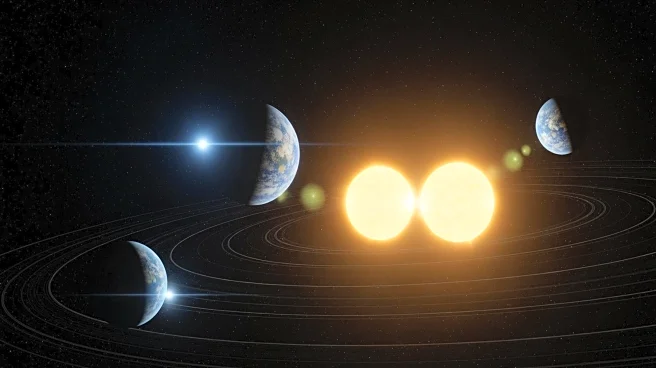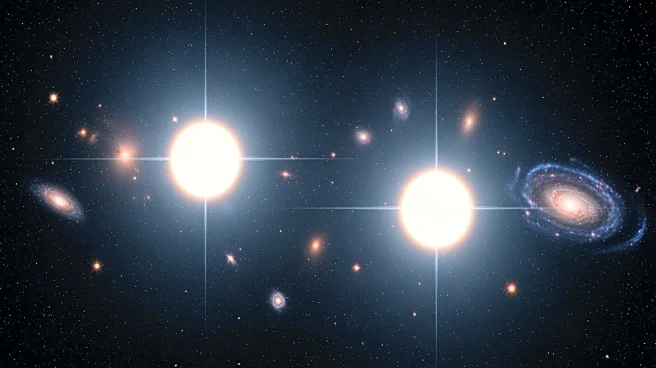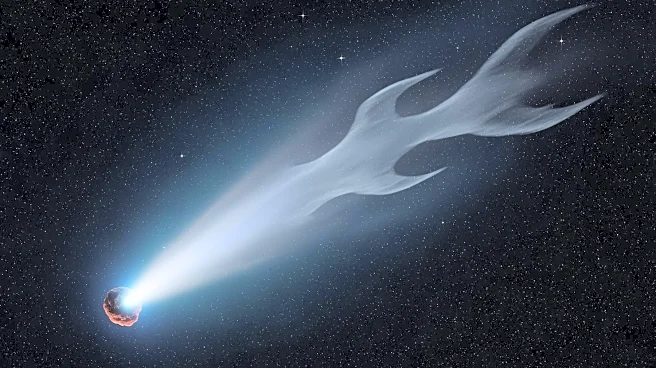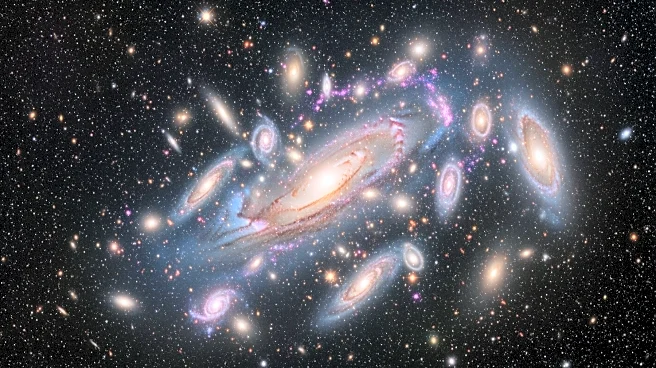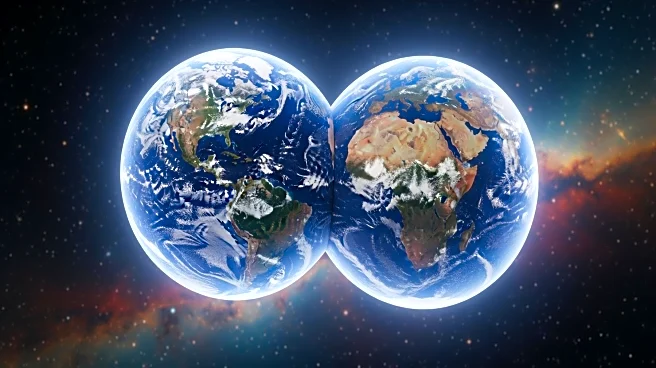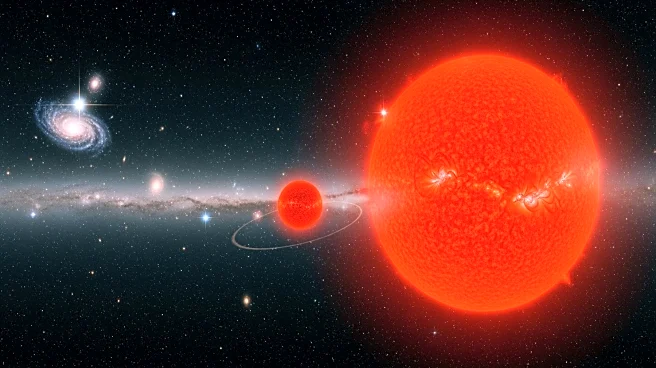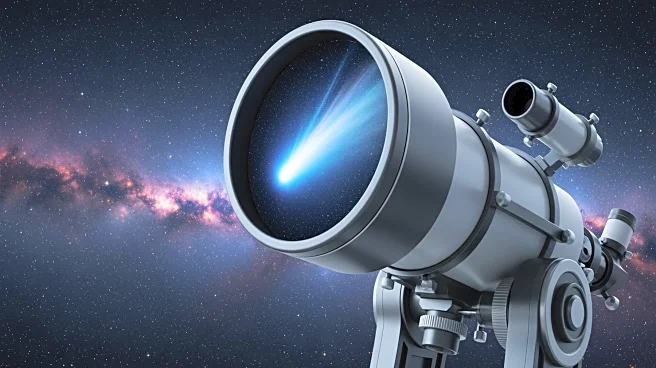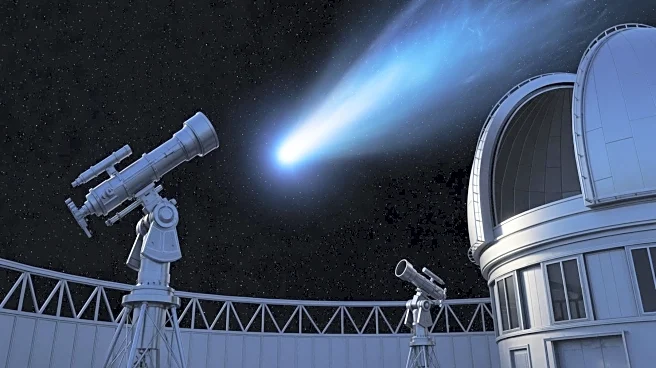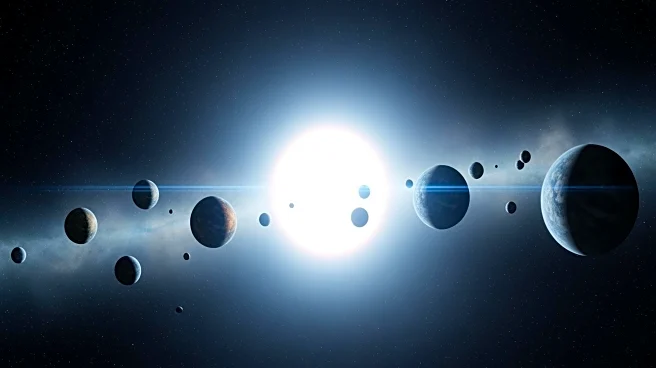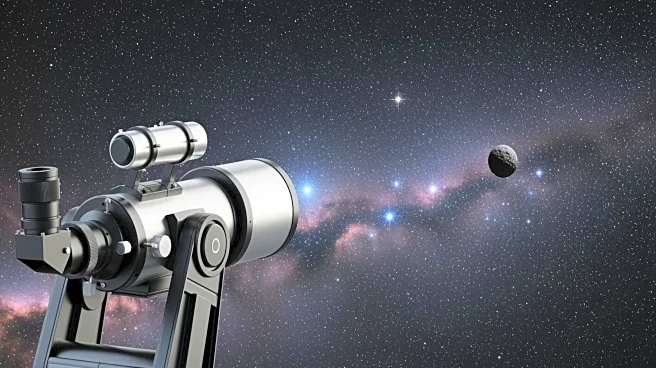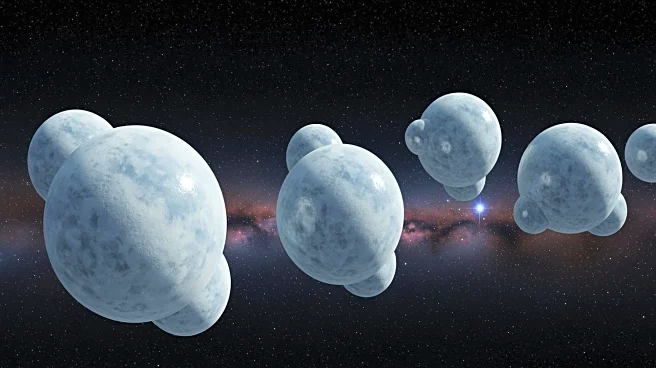What's Happening?
An international team of researchers has discovered three Earth-sized planets in the binary stellar system TOI-2267, located approximately 190 light-years away. This discovery, published in Astronomy & Astrophysics, is significant as it challenges existing
models of planetary formation in double-star environments, which are typically considered hostile to complex planetary systems. The planets are uniquely arranged, with two transiting one star and the third transiting its companion star, marking TOI-2267 as the first known binary system to host transiting planets around both stars. The discovery was facilitated by data from NASA's TESS space telescope and confirmed through ground-based observations using telescopes such as SPECULOOS and TRAPPIST.
Why It's Important?
The discovery of Earth-sized planets in a compact binary system provides a unique opportunity to test the limits of planet formation models in complex environments. It challenges the notion that such systems are too unstable for planet formation, suggesting that rocky planets can emerge and survive under extreme conditions. This finding could lead to a better understanding of the diversity of planetary architectures in the galaxy. The system serves as a natural laboratory for studying planet formation, potentially influencing future research and observations with advanced telescopes like the James Webb Space Telescope.
What's Next?
The discovery opens avenues for further observations with the James Webb Space Telescope and next-generation ground-based telescopes, which could precisely measure the masses, densities, and atmospheric compositions of these planets. These observations will deepen the understanding of planet formation in binary systems and may lead to new insights into the stability and characteristics of planets in such environments.
Beyond the Headlines
This discovery underscores the importance of combining space missions with specialized ground-based telescopes to advance exoplanetary science. It highlights the potential for discovering new planetary systems that defy traditional models, prompting a reevaluation of the conditions under which planets can form and persist.
